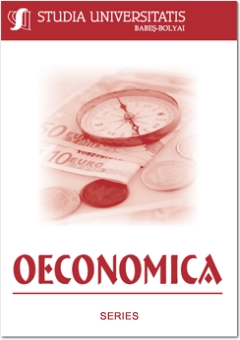ANALYSIS OF THE FINAL OBJECTIVES OF MONETARY POLICY. THE CASE OF CENTRAL AND EASTERN EUROPEAN COUNTRIES
ANALYSIS OF THE FINAL OBJECTIVES OF MONETARY POLICY. THE CASE OF CENTRAL AND EASTERN EUROPEAN COUNTRIES
Author(s): Iulian Vasile PopescuSubject(s): Economy
Published by: Studia Universitatis Babes-Bolyai
Keywords: DSGE models; Taylor rules; monetary policy; Bayesian estimation; Central and Eastern Europe.
Summary/Abstract: This paper aims to identify the prioritization of monetary policy final objectives promoted by central banks (CBs) in Central and Eastern Europe that use a strategy of inflation targeting. The analysis is built to determine the behavior of the monetary authorities in the Czech Republic, Poland, Romania and Hungary relative to the short-term nominal interest rate setting based on the estimation of an extended Taylor-type monetary policy rule, which additionally includes the exchange rate and a set of variables aimed at exploring the interactions between the monetary policy and financial stability. The modeling is performed in the context of a semi-structural dynamic stochastic general equilibrium (DSGE) model with implicit micro foundations. The main results revealed a strong orientation of the selected monetary authorities geared towards their fundamental objective of ensuring and maintaining price stability, but in parallel, towards stabilizing the exchange rate and the real economic activity, as well as the existence of moderate guidelines of limiting, through the monetary policy, the uncontrolled expansion of private credit and the formation of a real estate prices bubbles (leaning against the wind).
Journal: Studia Universitatis Babes Bolyai - Oeconomica
- Issue Year: 59/2014
- Issue No: 1
- Page Range: 25-43
- Page Count: 19
- Language: English

